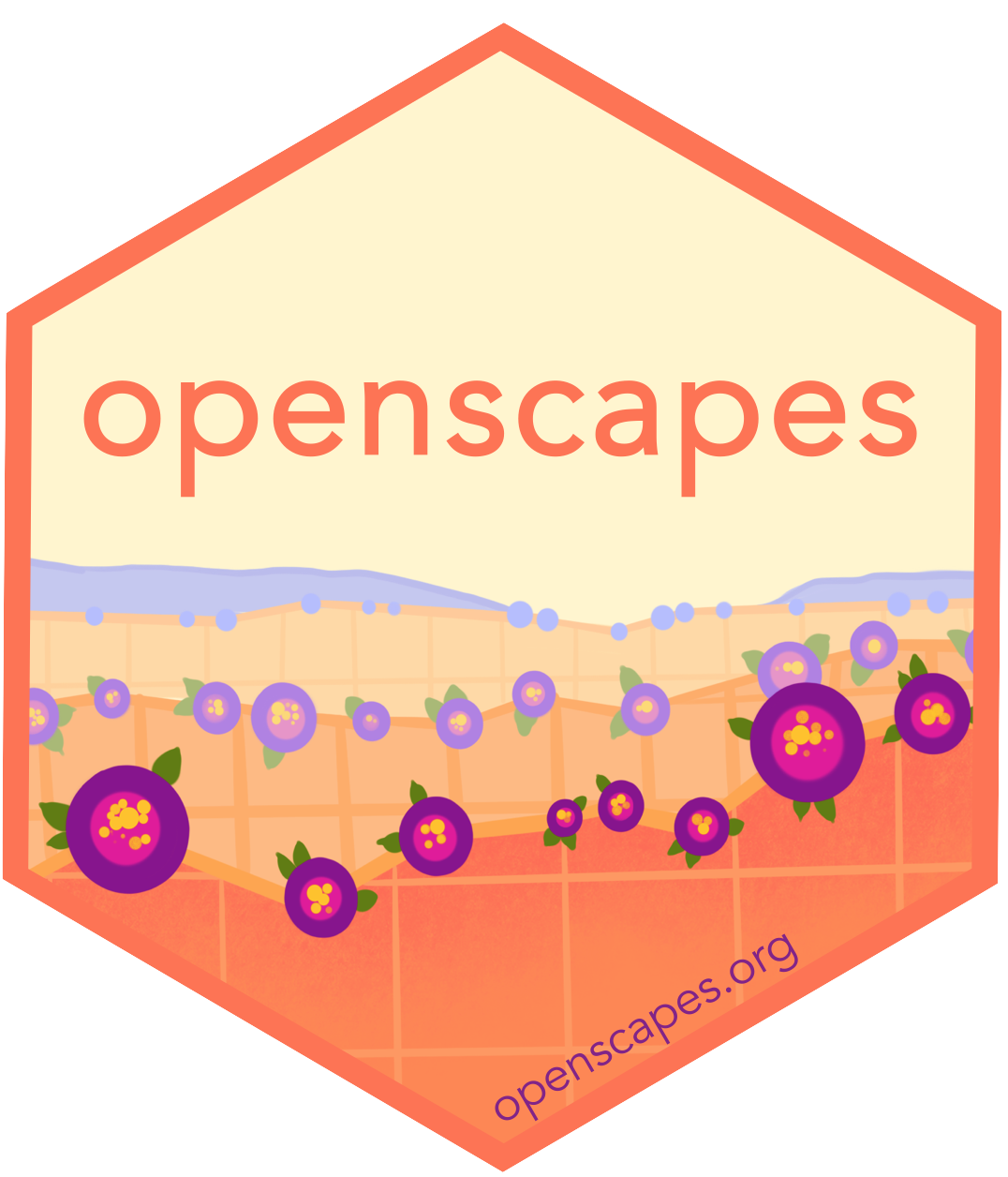Pathways and Outcomes
The Pathways concept help people make and communicate progress about shifting their workflows with open science
2-month Champions Cohorts go by quickly. In our final session, each team shares what they’ve learned through their work-in-progress. Outcomes are different for each team or individual, depending on what they decided to focus on.
Teams share their progress through our Pathways concept that frames how they work now and where they would like to go in terms of reproducibility, collaboration, communication, and culture. Practically speaking, this is the Pathways spreadsheet document, a template that builds off of Table 1 from Lowndes et al. 2017, but we’ve added this fourth important “culture” category so teams can be explicit about their plans for diversity, equity, inclusion as well as reproducibility, collaboration, and communication. Read on for example stories and guidance.
Pathways stories
“Show-not-tell” is an important concept in Openscapes, particularly since “what does open science look like”? is a question often asked.
Below are a few one-slide pictures of Pathways presented by Champions teams in their final sessions. For deeper details, scroll the blogs on what Champions teams and individuals have accomplished in the 24+ Champions Cohorts over the past 5 years. People often describe what they will do next, and then we see how they’ve implemented those plans in the optional 3-month check-in we host after the cohort conclusion.
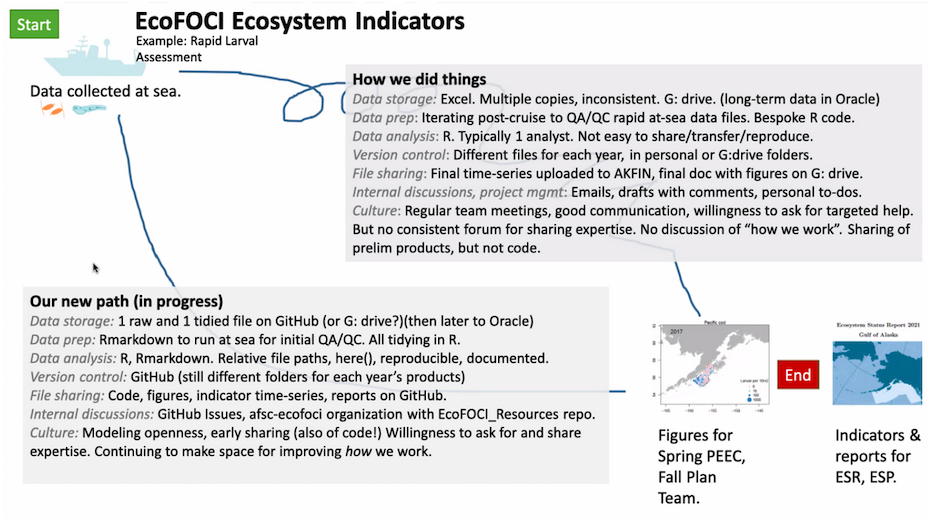
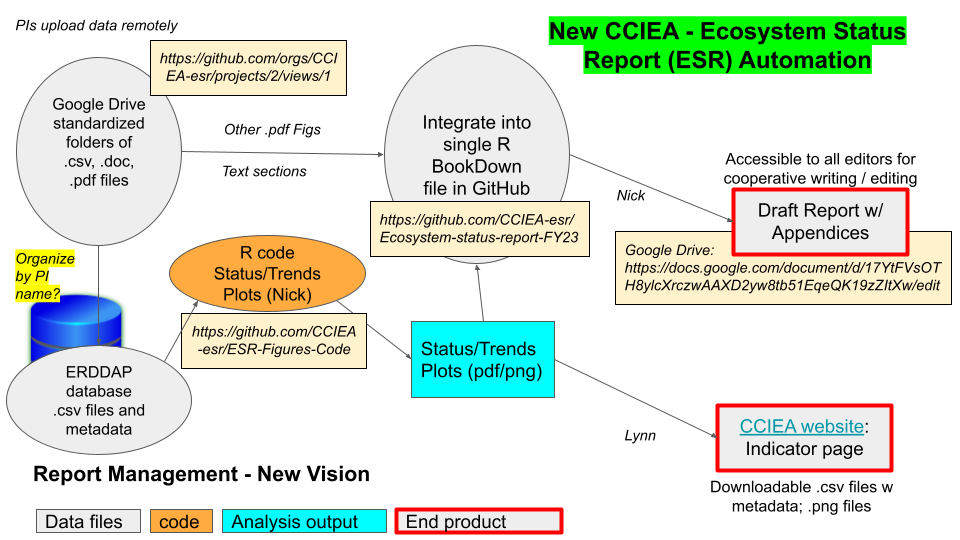
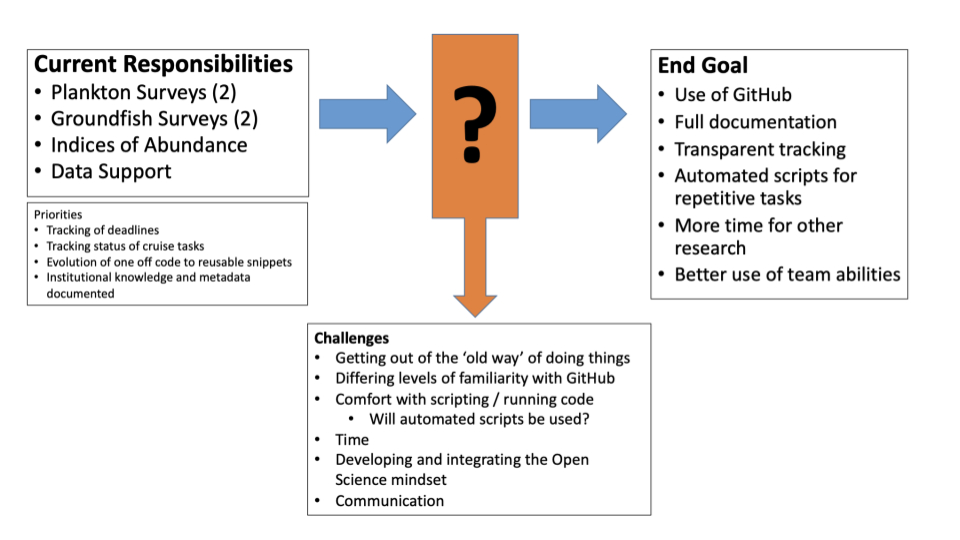
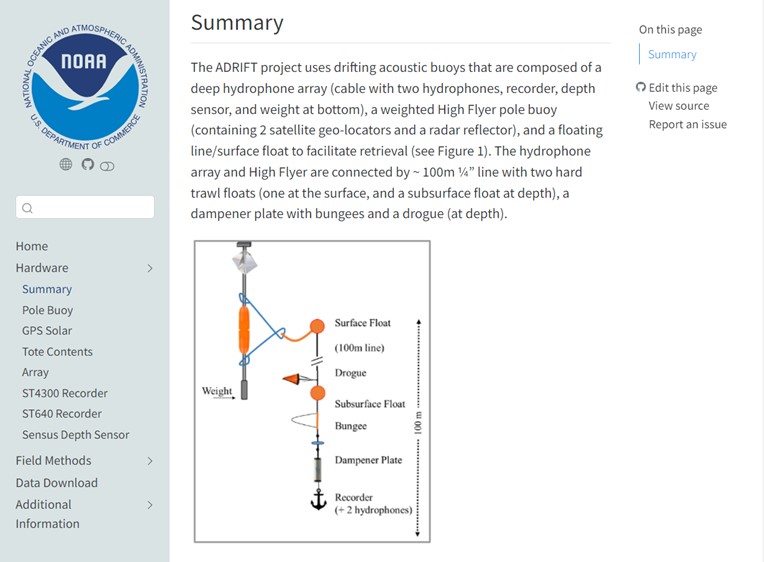
“I didn’t think to find solutions, because I didn’t realize that there was a problem; I thought that this was just the nature of doing [ecological] research – an endless pile of confusingly named csv files and R scripts….Now that I can see all the ways that our lab has profited from this initial investment, I cannot imagine how I managed without Openscapes’ principles. Our lab is producing substantially more science of higher quality and we are making more of our underlying data and code publicly available as a direct result of Openscapes’ intervention.” - Dr. Chelsea Wood, University of Washington
See also A TL;DR Collection of Stories from Openscapes Champions and Mentors; these stories are largely from 3 months+ following Pathways presentations.
First steps
The MML SAR story didn’t just ‘happen’. We heard where they’re at now, 2.5 years later. It started with small steps:
- Creating an R Script to make a figure. Each team member had been making that alone. Small task but freed up time for other ideas.
- “Join our GoogleSpace”. Rod learned about Google Chat and that transformed the team.
- Eli Holmes (NOAA Fisheries) in 2021: too many email addresses used for our data! We agreed as a group to make sure it went to a single email address.
Pathways concept
The Pathways concept is put to practice by an actual document that provides a structured way for your team to think how you work and find common approaches and needs (template).
This spreadsheet format has helped many groups think through their trailhead and identifying where they are now. Some groups have found it more useful to draw things out as a workflow on a whiteboard or google slide. The spreadsheet format might not work for your group, and that is okay; teams can use whatever format makes sense for them.

Planning guidance
The following is written as guidance for people using the Pathways concept.
You’ll develop your Pathway by talking with others on your team, screensharing (“show me”), and asking questions.
You’ll use the document by creating a copy of the template and then discussing with your team. Start with the “Now” column. How do you work now? Add rows as best reflects your work, but take a moment before deleting them in case it’s something you haven’t thought about in this way before rather than if it’s not relevant to you. Then, move on to the “Next Steps” column as you think through priorities and learn from/with/for your cohort. This will be a work in progress throughout the cohort that you’ll present a snapshot of in the final Cohort Call (see next) and that you can revisit following the cohort as well.
Presenting guidance
On the final Cohort Call, each team presents their Pathways. Each team has 3 minutes to share followed by 2 minutes for questions. We encourage leads not to present, and it’s great when we hear multiple voices from the teams. In the spirit of teamwork, many people co-present their Pathways, and provide plans for how they are moving from solo practices toward shared practices.
This is informal sharing of unpolished work-in-progress. Everyone makes progress throughout the Cohort: in mindsets, planning and actions. This is an opportunity to reflect and talk about it, building on the reflection breakout rooms that began most Cohort Calls. We’ve been reflective each week and we’ve all made progress.
Presentations do not need be line-by-line of the Pathways Spreadsheet and there’s no wrong way to talk about your progress. Whatever your group wants to create and share is great - could be a photo of a whiteboard, a slide, the Pathways spreadsheet, or a “screenshare and tell” live walk-through of your files/code/ideas.
A few reflection prompts that can help frame the presentations:
- What are the practices we’ve covered during the Cohort that most compel you?
- What are the practices we’ve covered during the Cohort that most confuse you?
- Are there practices that are new to you that you didn’t originally think would work with your own research interests? If so, which?
- What are your two biggest take-aways from the Cohort?
- What future revisions will you propose making for your pathway?
- Any final questions you want to workshop with the Cohort?
What is the impact of this?
What do impacts look like after the Champions Program has completed? NOAA Fisheries has participated in 10 Champions Cohorts (400 staff) since 2020, which helped scaffold plans for the Biden-Harris Administration announces support for NOAA Fisheries’ data, infrastructure, and workforce modernization in part via Openscapes. They may be the best example to answer the question “What does shifting to open science look like across a federal agency like NOAA, and what are the impacts to the efficiency and quality of their scientific products?”:
- A Year of Open Science Community Building at NOAA Fisheries (video). Eli Holmes (NOAA Fisheries Open Science), Evan Howell (Director of the Office of Science and Technology), Megsie Siple (Alaska Fisheries Science Center), Amanda Bradford (Pacific Islands Fisheries Science Center), Brian Fadely (Alaska Fisheries Science Center Marine Mammal Stock Assessments), Vivian Matter (Branch Chief of Southeast Fisheries Science Center), Kathryn Doering (Office of Science and Technology), Christine Stawitz (Office of Science and Technology), Carissa Geravsi (Gulf of Mexico Integrated Ecosystem Assessment), Lynn Dewitt (California Current Ecosystem Assessment Team). Year of Open Science Culminating Conference, March 21, 2024.
